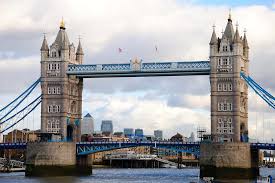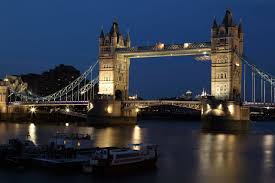The Tower Bridge is located over the River Thames in London city, England. It is an iconic symbol of London and it gets its name after the Tower of London which is built close to the Tower Bridge. The Tower Bridge comprises of two towers that are connected to each other with the help of two horizontal walkways. The Tower Bridge is at times referred to as the London Bridge. However, the truth is that the London Bridge is next to the Tower Bridge.
Nearest Tube Station to Tower Bridge is Tower Hill
The Tower Hill on the Circle and District Lines is the closest London underground station from the bridge. The closest Docklands Light Railway station is the Tower Gateway.
During the second half of the 19th century, there was a growth in the commercial sector in London. The expansion of commerce in the East End of London made it essential that a new river crossing is built downstream of London Bridge.

However, the construction of a fixed bridge was not an option as it would have prevented the tall-mastered ships from harboring the Pool of London which is located between the London Bridge and the Tower of London. In order to find out a solution to the issue, a committee was formed in 1876 and Sir Albert Joseph Altman was its Chairman. The Plan design submitted to the committee by Sir Horace Jones was selected in 1884.
The Architecture of Tower Bridge
The actual construction work of the bridge commenced in 1886, but it took around five years and 432 workers to complete the construction. A crucial contribution to the building of the bridge was provided by major contractors of that time. For laying the base of the bridge, two huge piers were sunk into the riverbed. The framework of the bridge was provided by the large quantity of steel. A layer of Cornish granite and Portland stones were used to protect the steel and gave the bridge its distinguishing identity.

The Bridge is 800 feet in length with its two towers, every 213 feet and built on piers. The space between the two towers, 200 feet, is divided in two equal bascules which can be elevated to an 83-degree angle so that the traffic from the river below the bridge can pass. The walkways within the bridge are 44 meters above the river. The original mechanism used for raising the bascules was powered with the help of pressurized water that was stored in many hydraulic accumulators. This system was replaced in 1974 by a new electro-hydraulic drive system.
Tower Bridge Opening
After the death of Jones, the architect in charge of constructing the bridge, George D. Stevenson was appointed in his place. Stevenson substituted the brick façade used by Jones with Victorian Gothic style. This change not only made the bridge a unique structure, but it was also used to harmonize the bridge with the Tower of London. The bridge was officially opened in 1894 by the Prince of Wales (Edward VII). Prior to the opening of the Bridge, the Tower Subway was the shortest route to cross the river from Tower Hill to Tooley Street.
The bridge even today used by thousands of commuters. It is an important crossing of the Thames. Safety measures like restricting the speed of the car or carrying a maximum of specified weight by trucks or other vehicles have been imposed on those who use this bridge. The use of the river for transportation has drastically reduced but that has not affected its popularity. The Tower Bridge of London continues to be an attraction for many people even today and remains one of the most unique constructions ever seen.
England Trains – Information on getting and reading your train ticket, the high speed, and regional train system; a link of train schedules.
More Info On- Bridge of Sighs Oxford City Walking Tour, London Attractions, Top 10 Things to See In London
